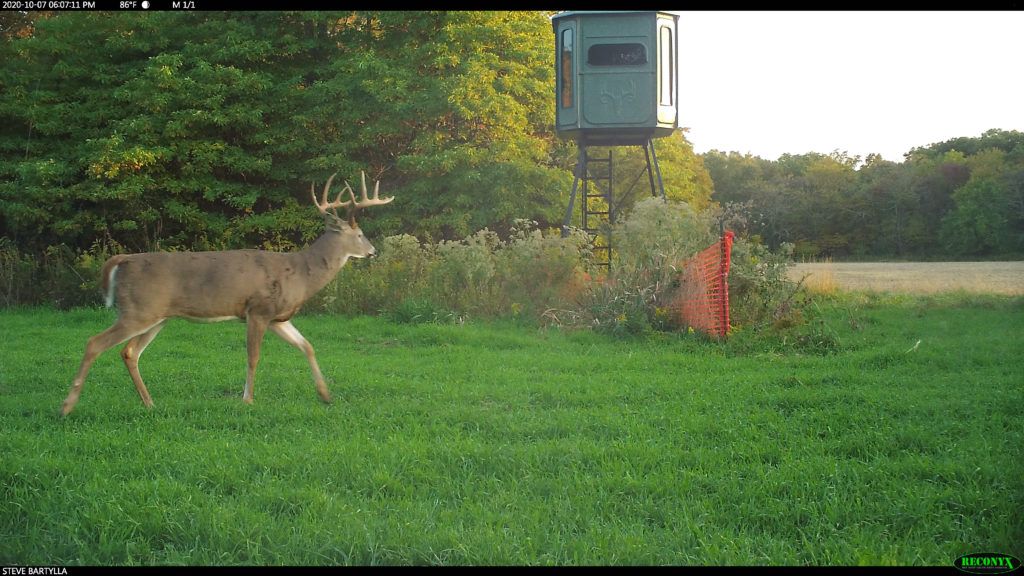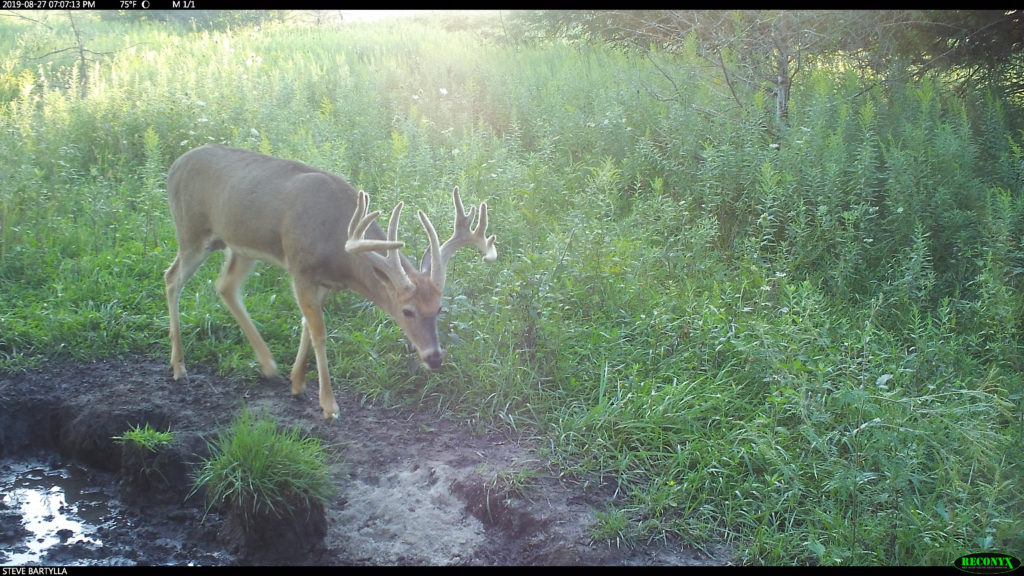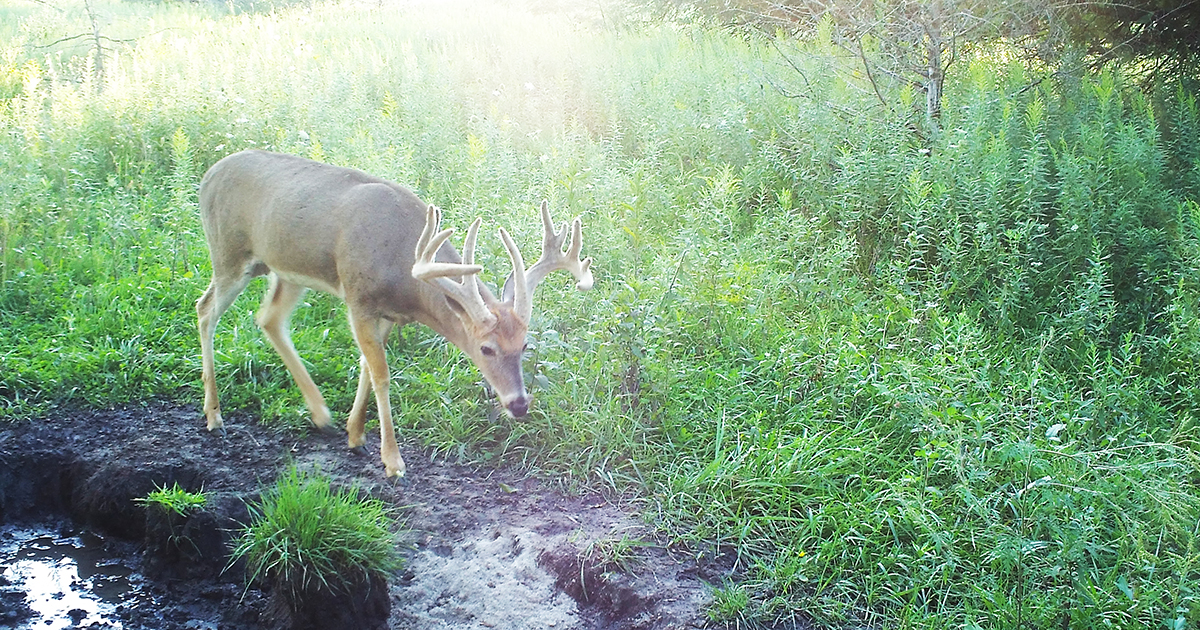So much hogwash is thrown around by “experts” supposedly “patterning” the buck they’re standing over that many believe it can’t be done. Well, in my experience, “patterning” deer to the extent many “experts” do is impossible because they never did what they claimed. That said, deer are “patterned” every year by real-world hunters, and here’s how most pull it off.
This is Chapter 19 of Steve Bartylla’s free online book, Understanding Mature Bucks.
Now, we get to wrap up with five chapters on putting it all together. That said, keeping with the theme of OUR “book,” we’ll be sticking more to a big picture view. I’m sure some of you have noticed that each “chapter” of our book pretty much dealt with details and how they fit into the big picture. That’s been purposeful, as I sure hope one of the themes that has shined through has been that there is no one answer, as the factors cause the questions to keep evolving from property to property, situation to situation, individual deer to individual deer.
In fact, I don’t trust anyone whatsoever that makes a bunch of definitive statements regarding a buck you’re trying to hunt, unless they’ve first asked a bunch of questions about your dirt, the deer you’re chasing and/or the host of specific factors you’re working under.
Instead, I’ve always felt that all of us are better off simply being given the data and trying to put our big picture knowledge to work on this specific situation, using what works, tossing what doesn’t and making some educated guesses off of what’s left. Even if someone else was to tell us exactly what to do and they miraculously are right, what do you learn doing what others tell you versus putting it together on your own? Speaking for myself, next to nothing. Even when I fail I learn sooooooooooooooooo much more than I ever would have if I’d had someone tell me what to do and it worked.
So, it’s time to try applying that to patterning Mr. Big. Frankly, the biggest trick I see left for us to cover in “patterning” Mr. Big is merely understanding what patterning a buck really is, or at least what I see it as. It sure is nothing like what hunters claim to have done on TV. That said, having put many TV hunters in stands I scouted and hung myself, while consulting for outfitters, I can tell you that the ones that talked about how they “patterned” the buck they shot from that stand, well, they just plain lied to you and anyone listening. The only patterning they did was see the picture of the buck the outfitter had saved for the TV hunter, as TV hunters generally trade free hunts for the exposure the outfitter hopes to get. The hunter doesn’t fill his buck tag and there’s no show, meaning the outfitter just wasted somewhere between 2–5K they’d just invested in marketing their business.

I fully appreciate that I’m likely not the very best at anything in this world (other than being myself, as no one else better be able to be me better than I am or there’s a serious problem). That said, I’ve been around the block a bunch, set up or hunted with a bunch of big names and a bunch more hunters that no one has ever heard of, yet put those big names to utter shame in woodsmanship and hunting skills.
In all of that, I’ve personally only once felt I had a buck truly patterned to the point hunters claim double digit times a day, every day on TV shows and even in print. Out of all the bucks I’ve ever shot in my life, there’s been one living on a wooded ridge, with identical crops in both valleys, that I truly believed I knew where he’d be during daylight, how he got to the food and which side valley he’d be feeding in that night, as well as how he’d travel there. I was also confident in which of his two bedding areas he’d return to and why. It was one of those freak situations where the wind could and did literally dictate his movement, bedding and feeding patterns, as he was in a situation where all else but the wind was equal, if you follow.
To me, yes, it’s a great goal to strive for, but being able to lock things down that tight just next to never happens, and, remember, I’ve managed a bunch of properties that were big enough that Mr. Big really never left them, and we’re still only talking one mature buck, in all of those years, and he wasn’t even on one of the big grounds.
On the off chance one does lock Mr. Big in that tight, due to the rut phases, changing food sources, bachelor groups disbanding and a host of other topics we’ve already covered in OUR “book,” we know darn well that Mr. Big’s patterns are changing dynamically over the deer season and what we learned likely will with it. Because of all the biological and physiological changes his body goes through each fall, dynamically changing habitat, hunting pressure, changing social stresses, on and on and on and on, we KNOW one thing. Whatever his patterns are today, they are going to change. The question isn’t if, it’s when and how.
To me, patterning a buck merely means we know one or more specific things he tends to be doing, during that specific window in time, and where that is occurring. As we all now know, mature bucks only have one home range, but very often have multiple bedding areas (core areas) and shift from area to area, within their home range. They even often have multiple bedding areas within the same general area, shifting between them to take advantage of winds and even just seemingly because they can, at times. Now add in typically having multiple food sources at any one time, trails leading between all of these locations and the idea that people like me are soooooooooooo dang good that we routinely pull this off, yes, because we are that much better than you, is pure horse droppings, in my experience, and I’ve had a good deal of experience with people in those niches over the years.
So, we need to know at least one thing Mr. Big tends to do, but it sure helps if one knows more and if at least some of those actions are occurring in daylight. Speaking for myself, virtually any time I say or write about patterning deer, I merely mean determining one or more of the food sources they’re currently using and hoping to have an educated guess or better on one or more of his bedding areas. Outside of one buck, it generally doesn’t get a lot more detailed than that, for me.

That really is the entire point of this chapter. Frankly, sorry I had to waste it on explaining patterning, as opposed to how to pull it off. That said, everything we’ve covered in OUR “book” up to this point really has been telling you how to pattern Mr. Big. That’s simply understanding his drivers and the programming langue of IF _____ THEN ______. Frankly, the reason you haven’t heard about all these “patterning” secrets the “experts” use is because I don’t believe they exist and most only have horse droppings come out of their mouths when bragging on how great they are at patterning deer.
Frankly, the only real “secret” I’ve known, I’ve previously shared and trail cameras have greatly reduced its power. That’s merely by raking 3ish-feet sections of trails and returning to inspect the size and direction of the tracks. Say you’ve got a .5-acre food source with four main trails dumping in. Merely rake 3-feet sections where they dump into the food source, as well as follow the trails back until they split and doing the same on the splitters. Returning 2–4 days later, you can inspect the tracks. If you find an overly big set, it’s likely Mr. Big. Follow that trail until where it splits and he’ll likely tell you which area he’s bedding in, as well as the track directions indicating if he is using this trail to enter, exit or both, which tells us whether mornings, afternoons or both are the best sits on this trail. Sure, it’s still an educated guess he’s bedding on the ridge, when his track is coming from the splitter leading to the ridge, but it’s generally a fairly safe bet.
Outside of that and really paying attention to what the deer on cameras are telling you, where they were coming from, what they’re doing and where they’re likely headed, as well as constantly scouting while out in the deer woods or on stand, it’s really merely putting a bunch of puzzle pieces together to hopefully see just enough of the picture to reveal a kink in Mr. Big’s armor.
Next, we’ll jump into whether or not bucks are patternable during the rut, and how we can use that to bring a bit of order to what many see as utter chaos. As you already know, it’s far from chaos. Mr. Big actually employs a pretty darn smooth system.
Read Chapter 1: Whitetail Tendencies
Read Chapter 2: Whitetail Home Ranges
Read Chapter 3: How Deer Use Core Areas
Read Chapter 4: When Core Areas Shift
Read Chapter 5: Seasonal Shifts
Read Chapter 6: Family Group Dominance
Read Chapter 7: Male Dominance
Read Chapter 8: Deer Population Dynamics
Read Chapter 9: Deciphering Deer Breeding Phases
Read Chapter 10: Big Deer Breeding Behavior
Read Chapter 11: Whitetail Rut Stress
Read Chapter 12: How Deer Deal With Winter Stress
Read Chapter 13: Master Whitetail Phases
Read Chapter 14: Don’t Overthink Deer Behavior
Read Chapter 15: The Weather Factor
Read Chapter 16: Pressure-Cooker Whitetails
Read Chapter 17: Use Pressure to Your Advantage


